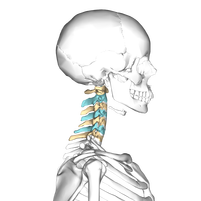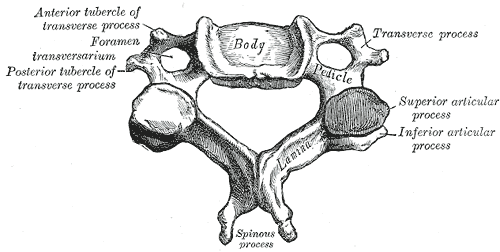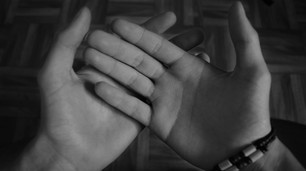- Home
- About Us
- TSPT Academy
- Online Courses
-
Resources
- Newsletter
- Business Minded Sports Physio Podcast
- Day in the Life of a Sports PT
- Residency Corner
-
Special Tests
>
-
Cervical Spine
>
- Alar Ligament Test
- Bakody's Sign
- Cervical Distraction Test
- Cervical Rotation Lateral Flexion Test
- Craniocervical Flexion Test (CCFT)
- Deep Neck Flexor Endurance Test
- Posterior-Anterior Segmental Mobility
- Segmental Mobility
- Sharp-Purser Test
- Spurling's Maneuver
- Transverse Ligament Test
- ULNT - Median
- ULNT - Radial
- ULNT - Ulnar
- Vertebral Artery Test
- Thoracic Spine >
-
Lumbar Spine/Sacroiliac Joint
>
- Active Sit-Up Test
- Alternate Gillet Test
- Crossed Straight Leg Raise Test
- Extensor Endurance Test
- FABER Test
- Fortin's Sign
- Gaenslen Test
- Gillet Test
- Gower's Sign
- Lumbar Quadrant Test
- POSH Test
- Posteroanterior Mobility
- Prone Knee Bend Test
- Prone Instability Test
- Resisted Abduction Test
- Sacral Clearing Test
- Seated Forward Flexion Test
- SIJ Compression/Distraction Test
- Slump Test
- Sphinx Test
- Spine Rotators & Multifidus Test
- Squish Test
- Standing Forward Flexion Test
- Straight Leg Raise Test
- Supine to Long Sit Test
-
Shoulder
>
- Active Compression Test
- Anterior Apprehension
- Biceps Load Test II
- Drop Arm Sign
- External Rotation Lag Sign
- Hawkins-Kennedy Impingement Sign
- Horizontal Adduction Test
- Internal Rotation Lag Sign
- Jobe Test
- Ludington's Test
- Neer Test
- Painful Arc Sign
- Pronated Load Test
- Resisted Supination External Rotation Test
- Speed's Test
- Posterior Apprehension
- Sulcus Sign
- Thoracic Outlet Tests >
- Yergason's Test
- Elbow >
- Wrist/Hand >
- Hip >
- Knee >
- Foot/Ankle >
-
Cervical Spine
>
- I want Financial Freedom
- I want Professional Growth
- I want Clinical Mastery
Assessing segmental mobility in those with nonspecific neck pain vs. asymptomatic individuals4/21/2015  A recent study was published in JOSPT that examined stiffness in the cervical spine in those with nonspecific neck pain and asymptomatic individuals. The results revealed a difference in stiffness between the two groups. This should come as little surprise to those with manual therapy background, but the methods may raise some concern. For example, the age range was quite large (18-55), which may allow for significant differences in normal "stiffness" based on age-related degeneration. Interestingly, a standardized device was used for measuring how much force was required to move a segment. While it helps to consistently apply the same force in assessment (reducing inter- and intra-rater reliability), the validity of what should constitute stiffness isn't as thoroughly established. However, the presence of a significant difference in stiffness still warrants inclusion of these results in our clinical reasoning. Why there is a difference in stiffness isn't as clear. One theory is that with the perceived "pain," there is an increased level of tone in the surrounding muscles, limiting the motion at the spinal segments. What should be noted, however, is that there was no correlation between the magnitude of stiffness and the level of pain. This may be explained by modern pain science theory, where amount of dysfunction doesn't typically match the perceived amount of pain. What is the impact of this study to us? It may be unlikely that we, as therapists, can manually detect the presence of stiffness in the cervical segments. That doesn't mean the findings are insignificant. The fact that there is a difference between the groups suggest there is potential for future assessment. Also, it appears to be another sign to enhance some previous research regarding the benefit of manual therapy combined with exercise improving mechanical neck pain. With patients with nonspecific neck pain demonstrating stiffness in the cervical spine, we should consider using a method to improve mobility restrictions in our plan of care. Identifying restrictions can be difficult, but using a standardized examination format can enhance our ability to detect overall mobility restrictions. Reference: Ingram LA, Snodgraass SJ & Rivett DA. (2015). Comparison of cervical spine stiffness in individuals with chronic nonspecific neck pain and asymptomatic individuals. J Orthop Sports Phys Ther. 2015 Mar;45(3):162-9. Like this post? Fore more advanced information, join the Insider Access Page! Also, check out similar previous posts below.
1 Comment
4/29/2015 12:25:05 pm
Great synopsis of the article. The fact that we can't tell what motion segment is stiff is an interesting debate but one that I think is worth having... Especially since some schools of manual therapy hold fast to the concept of segmental specificity as paramount to treatment. I can agree that this is important to the biomechanics but with the mounting literature indicating that we make more of a neurophysiological change with manual therapy, I question if segmental stability is a must.. Especially in light or studies showing the same outcome between a segmentally specific cervical thrust and a randomly selected segment cervical thrust. Could it be that the neurophysiological benefit and "reducing the threat to the nervous system" and therefore reducing the output of pain from the brain trumps the biomechanical findings that we think we feel and are treating?? Who knows, but an interesting thought in any event. As for assessment, like you stated, I feel like this paper should not drive us to throw out manual assessment just because it might not be as accurate as we think, but rather we should use it as one piece of the assessment puzzle and see if it is consistent with our other data and develop our plan from the entirety of data... Without manual assessment (even with it not being as good as we think), we would be treating blindly with manual therapy and that could be unsettling ground to stand on..
Reply
Leave a Reply. |
Dr. Brian Schwabe's NEW Book in partner with PaleoHacks!
Learn residency-level content on our
Insider Access pages We value quality PT education & CEU's. Click the MedBridge logo below for TSPT savings!Archives
July 2019
Categories
All
|








 RSS Feed
RSS Feed